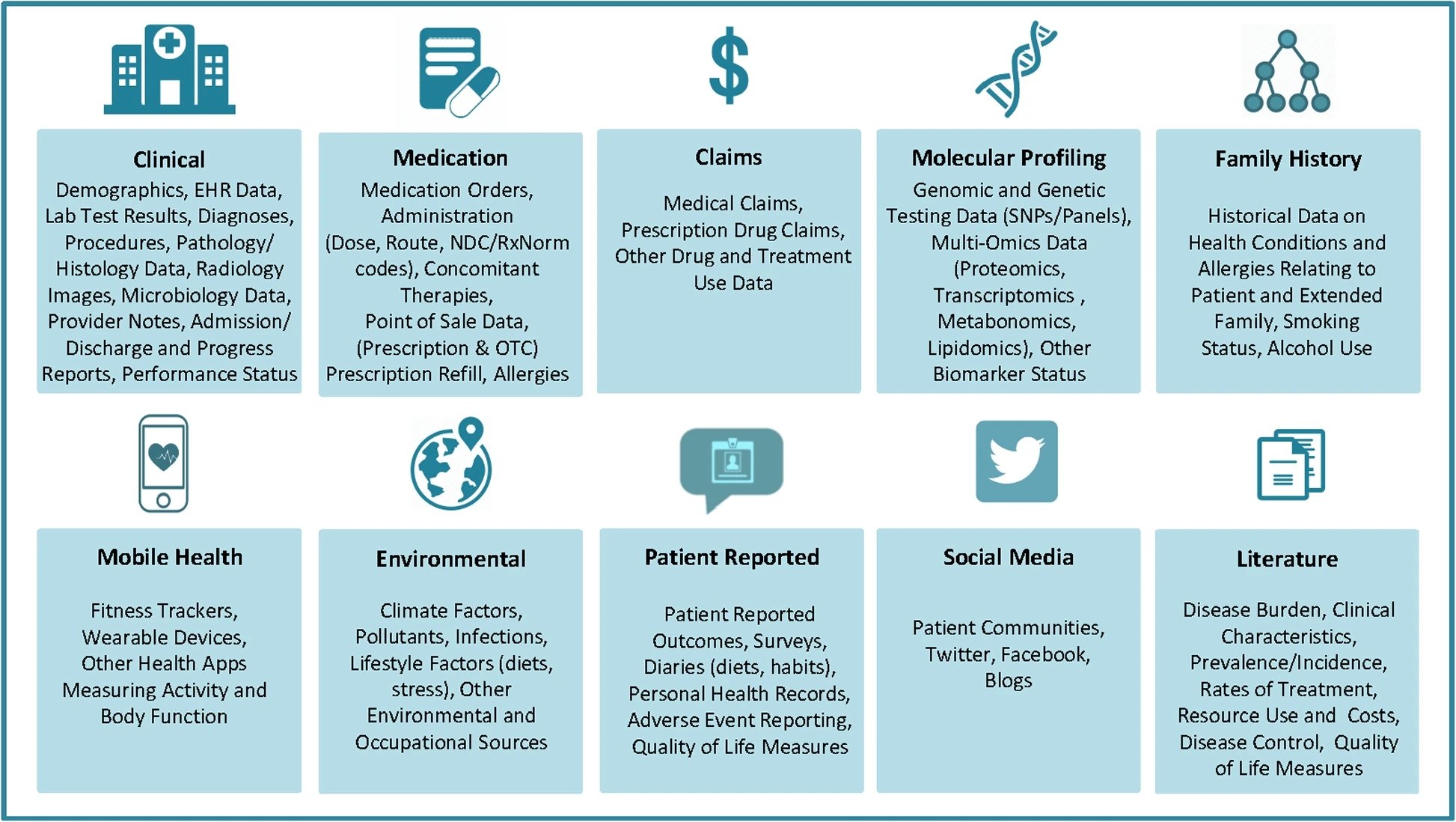Liu, F., & Panagiotakos, D. (2022). Real-world data: a brief review of the methods, applications, challenges and opportunities. BMC Medical Research Methodology, 22(1), 287.
Key Takeaways
- Real-World Data (RWD) has emerged as a critical component in modern healthcare.
- The ubiquity of the internet, wearable devices, electronic health records, and various technology-driven services has led to the rapid generation of digital RWD.
- These data sources provide a wealth of information about human health and healthcare delivery.
- This article provides a brief review of the characteristics, types, and applications of RWD, common models and approaches for utilizing and analyzing RWD, as well as the associated challenges and opportunities.
Characteristics, Types, and Applications of Real-World Data
RWD sets itself apart from data collected in controlled settings, such as randomized trials, in several ways:
- Observational Nature: RWD is gathered in real-world clinical settings, making it observational rather than experimental.
- Unstructured and Heterogeneous: RWD often includes unstructured data types, such as texts, images, and network data. Variability in data entry across healthcare providers and systems can lead to inconsistency.
- High-Frequency and Dynamic: Some RWD, like measurements from wearables, is generated at a high frequency, resulting in voluminous and dynamic data.
- Incomplete and Lacking Key Endpoints: RWD may lack crucial endpoints required for analysis since it is not originally collected for research purposes.
- Subject to Bias and Measurement Errors: RWD can be subject to selection bias and measurement errors, both random and non-random.
Common RWD types:
 Image from Liu et al. (2022)
Image from Liu et al. (2022)
- Electronic Health Records (EHRs): Vital for diagnostics, predictive modeling, and replicating clinical trial findings.
- Registry Data: Useful for rare diseases, best clinical practices, and regulatory decisions.
- Claims Data: Offers insights into patient-provider interactions, disease prevalence, and more.
- Patient-Reported Outcome (PRO) Data: Provides patient insights for intervention effectiveness and symptom monitoring.
- Wearable Data: Enables large-scale research in areas like neuroscience and environmental health.
Using and Analyzing Real-World Data in Research
RWD can be harnessed by researchers through:
- Pragmatic Clinical Trials: Testing intervention effectiveness in real clinical settings.
- Target Trial Emulation: Applying trial principles to observational data for causal inferences.
- ML and AI Techniques: Machine Learning's (ML) predictive power finds applications in health informatics and pandemic data analysis.
“ML has enjoyed a rapid surge in the last decade or so for a wide range of applications in RWD, outperforming more conventional approaches.”
Challenges and Opportunities in Real-World Data
Challenges in RWD include data quality, efficient statistical and machine learning procedures, explainability, reproducibility, privacy, and diversity. These challenges are interconnected, requiring a holistic approach. Addressing them is essential to avoid bias and underrepresentation.
Despite these challenges, RWD holds immense potential for evidence-based healthcare decisions. Ongoing efforts to enhance data quality, privacy, transparency, and rigor will unlock its full potential.
RWD is a game-changer in human health and performance.
With collaborative efforts and advancements in data quality and ethics, RWD will continue revolutionizing patient care and healthcare practices.